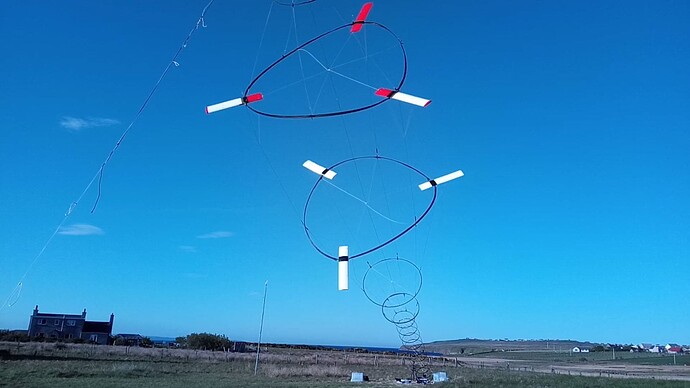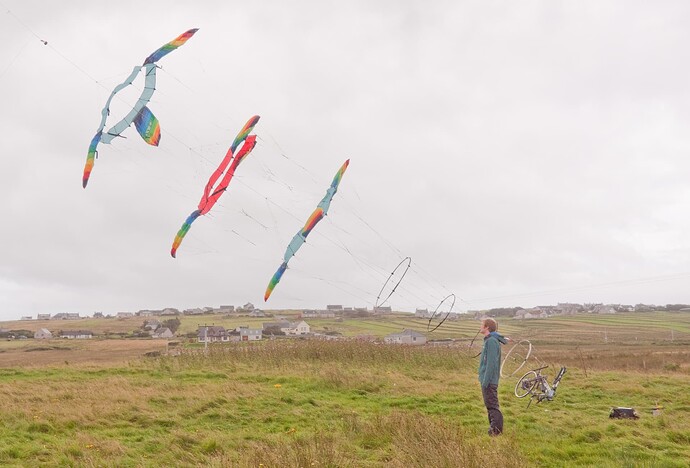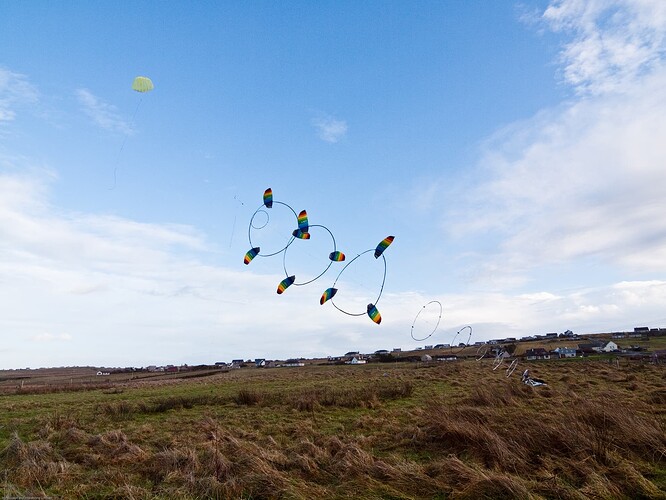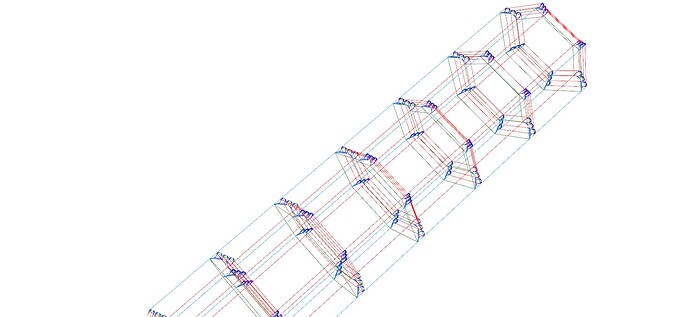@Windy_Skies some questions on your post to make sure we’re on the same page…
you’re referring to this post Death to "Soft vs rigid" - #87 by PierreB
with this picture
The fuselages hold the blades and the rotor TRPT (Tensile Rotary Power Transmission) ring together.
Just to be clear, they are the black bands seen on the lower white rotor blades
1st paragraph - longer? - not sure I’m following you here, which dimension longer? spanwise radial out from centre, chordwise band path, or depth in line with the tether line
The TRPT rings for the rotor need to maintain enough rigidity to be able to launch and land.
Longer structures bend more easily.
2nd para - no that was not the most recent. we moved away from rings to using polygons. Interfacing with the fuselage had trickier shapes but overall we broke fewer TRPT tubes.
Doubled the (Number) of lines = wrong.
Why?, 2 rotors on 1 TRPT is more like halved the number of lines. = less drag per rotor.
The tethers to the centre are tensile yes. Most AWES suffer from not being able to maintain a small radius looping flight. These tethers prevent the rotor from exploding centripetally. They allow the rotor to spin a lot faster = more power with less torque = less material. Tensile design is an amazing thing use it where you can.
3rd para - which suggestions? and pre spinning the rotor is a great idea if you can maintain directional control of the rotor and your induced spin is results in upward thrust, however this needs the rotor to be spinning in a more horizontal orientation. For simplicity of launch we instead used a lift kite at the rotor head and stretched the rotor and TRPT out on the field (Please tell me you knew this already)
4th para from the picture I uploaded 10th International Airborne Wind Energy Conference (AWEC 2024) in Madrid - #67 by Rodread - I spoke with Franz about his concept at AWEC
As you pointed out earlier there’s a balance - you don’t want too many bridles going around at full diameter. We know that a rotor with effectively single line blades (Multiple bridles) works fine, and holds the blades well with respect to the plane of the rotor.
I do agree though
This softer ring rotor required more bridling
Than this more rigid ring rotor
And I also agree that a combination of lines up the centre of the shaft and up the outside of the shaft can likely make a larger TRPT more feasible see
In this concept (The OM stack) the blue outer tethers and red inner tethers support kite blades made using multiple smaller kites (shown as Blue soft kites) on an arch configuration.
It was assumed this would have to be launched vertically from a ~ fairground tilting centrifuge carousel style groundstation
Hope that helps




